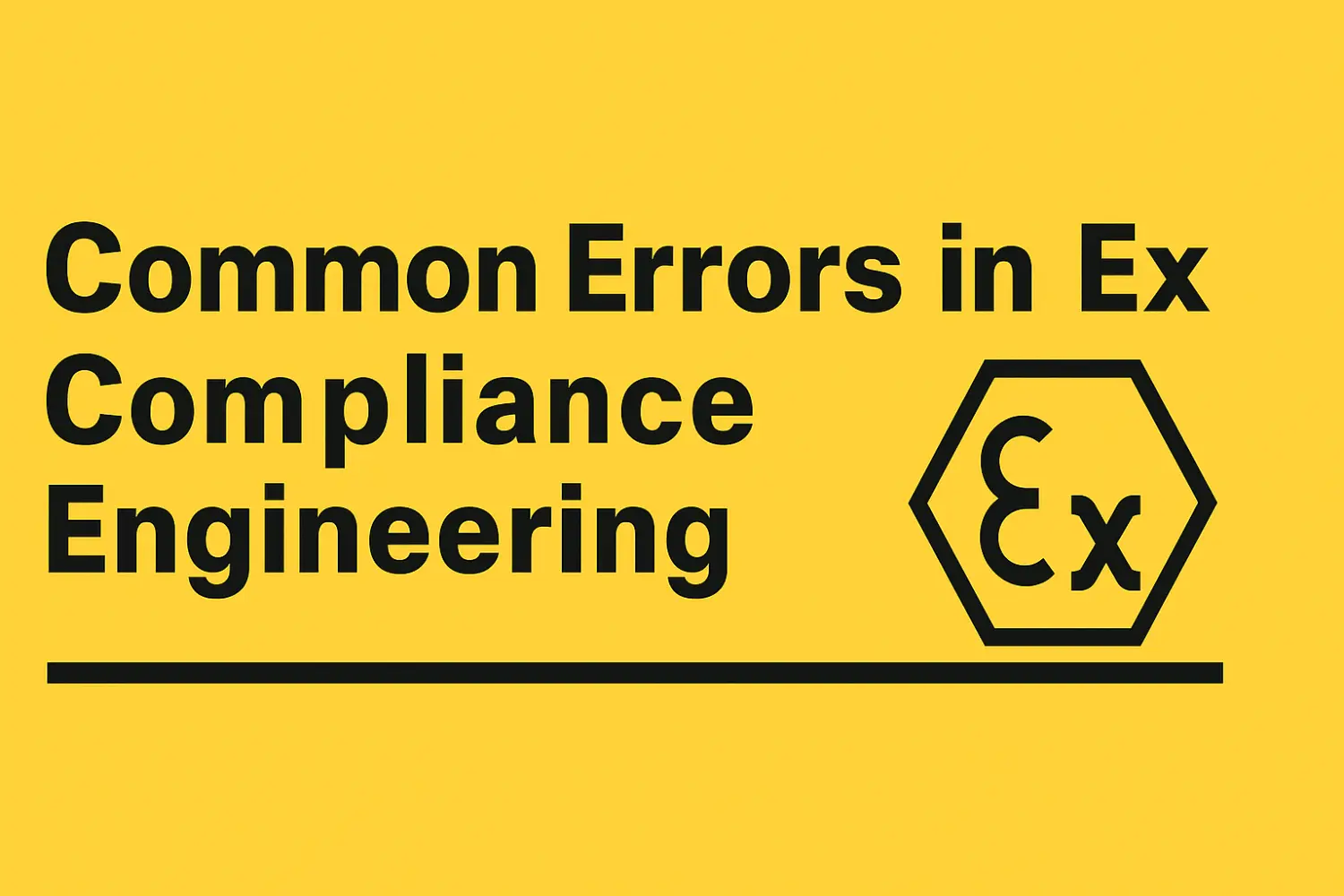1. Hazard Identification (Zone Classification Errors)
Typical failures:
- Incorrect or outdated hazardous area classification
- Misunderstanding of gas/vapour/dust groups (IIA/IIB/IIC, IIIA/IIIB/IIIC)
- Ignoring ventilation, confinement, release grades
- Relying on as-built drawings instead of real field conditions
- No integration of process data (temperature, pressure, LEL, flashpoint)
- Overlooking non-electrical ignition sources (hot surfaces, mechanical friction)
2. Risk Evaluation (Ignition Risk Assessment Errors)
Typical failures:
- Wrong assumptions on T-class / maximum surface temperature
- Not considering normal vs. abnormal conditions
- Ignoring equipment protection levels (EPLs) and required safety margins
- Underestimating dust layer thickness and thermal ignition
- Treating probability of failure subjectively
- Not evaluating electrostatic hazards (powders, liquids, clothing)
3. Control Measures Plan (Design & Selection Errors)
Typical failures:
- Selecting wrong Ex technique (Ex e vs Ex d vs Ex t vs Ex nR, etc.)
- Installing non-compatible accessories (glands, adapters, reducers)
- Missing ingress protection requirements (IP54/IP66)
- No coordination between electrical + mechanical + instrumentation
- No consideration of ambient temperature ranges → wrong T-class
- Missing certificates or using invalid/incomplete certificates
- Not verifying equipment suitability for the specific zone + EPL
4. Documentation & Communication Errors
Typical failures:
- Not maintaining a properly structured Ex Register
- Certificates saved without:
- ATEX DoC
- EU Type Examination Certificate
- Instructions/User manuals
- No linkage between equipment → location → zone classification
- Poor communication between engineering, operations, maintenance
- Generic checklists not adapted to site/process
- Using translated certificates instead of originals
5. Review & Update Errors (Inspection & Maintenance)
Typical failures:
- No compliance with IEC 60079-17 inspection cycles
- 36 months (continuous operation)
- 12 months (mobile)
- 6 months (heavy duty / severe conditions)
- Only "visual" inspections → no close/detailed inspection
- Not updating the Ex register after:
- equipment replacement
- repairs
- modifications
- Ignoring findings or not closing "repeat nonconformities"
- Missing proof of competence for inspectors (IEC 60079-17, -19)
6. Continuous Improvement Errors (Organisational Weaknesses)
Typical failures:
- No formal Ex competency framework (training → assessment → refresh)
- No change management for Ex areas (MOC)
- Ignoring lessons learned from:
- near misses
- fires/explosions
- equipment failures
- No ownership: engineering blames maintenance, and vice versa
- Leadership not demonstrating Ex culture / commitment
- No digitalisation → information is lost between teams
Keep up good work!
Arpad
veress@exprofessional.com

